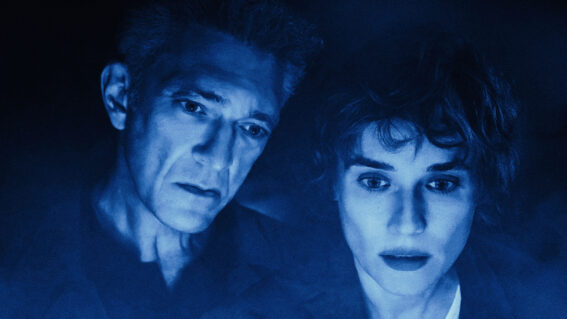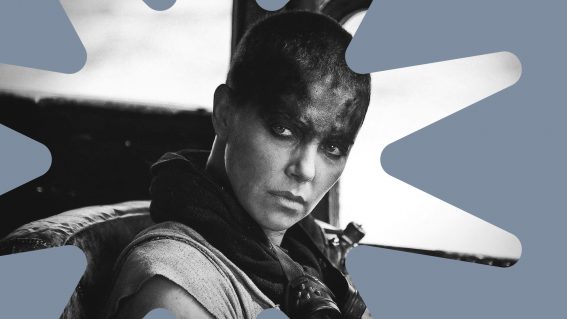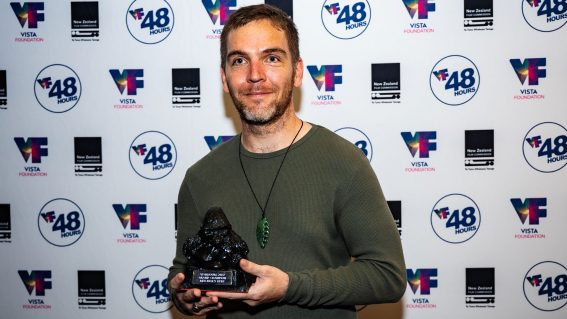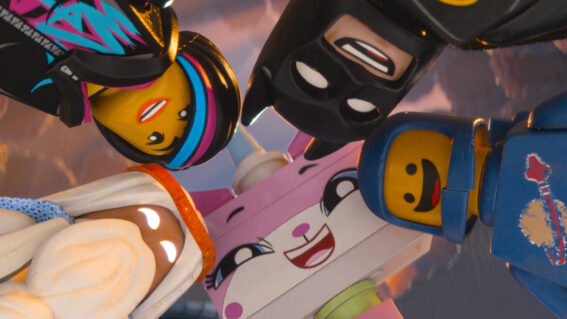I entered Hyper Cinema, the world’s first live AI experience
I wasn’t sure what to expect but, as per my answer to the data-gathering question ‘describe yourself in one word’, I was curious.

Located in Auckland, New Zealand, Hyper Cinema is the world’s first live AI experience. Liam Maguren went along to the experience and found himself staring at countless other Liam Magurens.
As I clutched the ‘data cube’ holding images of my face, an enthusiastic gentleman welcomed me: “You are the fifth person in the world to experience Hyper Cinema. Well, technically the third.” Sporting a white lab coat and a wonderfully matching moustache, I could feel this fellow’s excitement for this installation. He didn’t elaborate on the technically the third part and I couldn’t bring myself to question it.
Promoting itself as the world’s first live AI experience, Hyper Cinema takes your physical likeness and select data (via a simple survey) to construct a visual compendium of different possible versions of you. “It’s your Multiverse,” the official site describes. “You’ll see mind blowing, hilarious, surreal, thought-provoking glimpses into alternate timelines of your life.”
I’m a generic-looking white guy, so I’ve never had an issue seeing myself represented in cinema. At the same time, I’ve had no desire to see my actual face in an actual film and was sceptical about an AI’s ability to read my personality from just a handful of survey questions. I wasn’t sure what to expect from Hyper Cinema but, as per my answer to the question ‘describe yourself in one word’, I was curious.
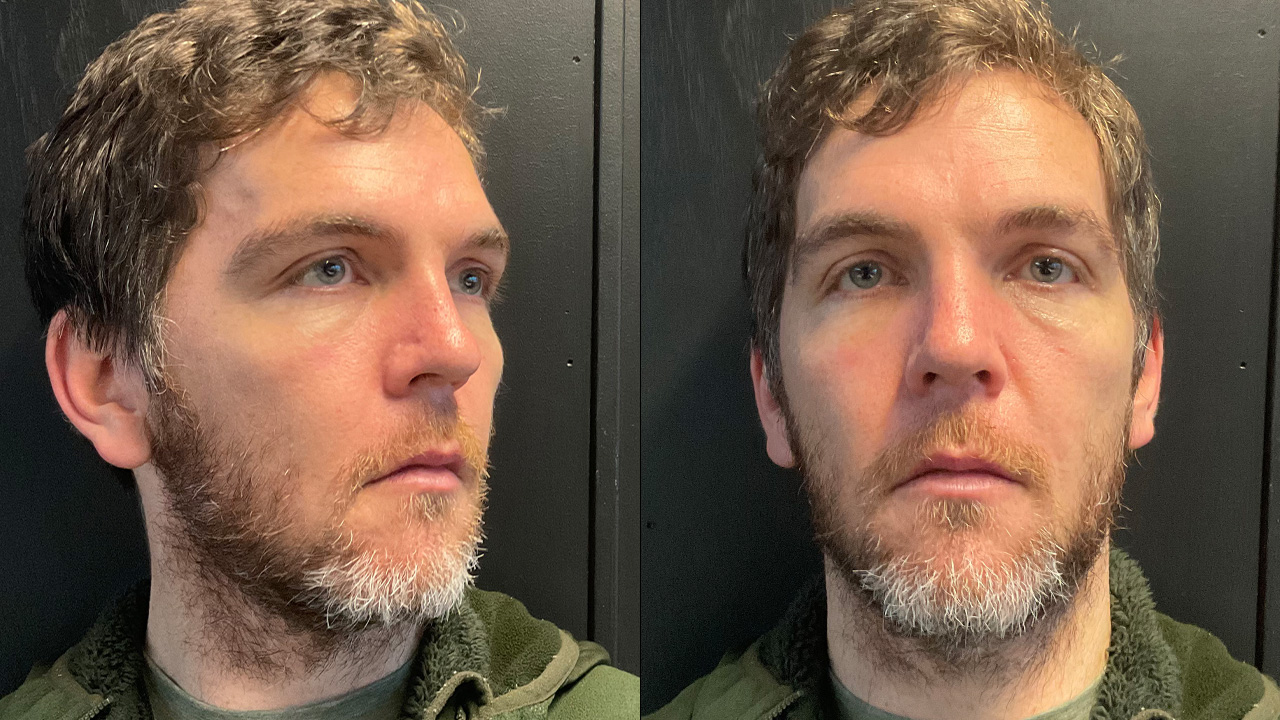
My generic headshot #nofilter
As someone who’s had at least one finger on the pulse of AI, I can tell you now: my mind wasn’t quite blown. Anyone familiar with Midjourney, ChatGPT, the current Photoshop BETA, or the Ctrl Shift Face YouTube channel will instantly recognise the mechanisms behind Hyper Cinema. Fortunately, the experience still delivered on the promise of hilarity, surreality, and thought provocation.
The survey contained a mix of easy questions—my name, my pronouns, my #1 concern with the world right now (the climate crisis, naturally)—and some oddly specific ones—favourite vegetable (broccoli), ideal superpower (telekinesis), dream job when I was a kid (chef). With my data cube fully loaded, I entered the first phase of Hyper Cinema: the actual cinema.
This roughly five-minute video showcased “me” in four different universes: me as a Hollywood big-shot, me in a Bioshock Infinite-like city in the clouds, me as a capitalist pig (pictured below), and me as a tomb raider.
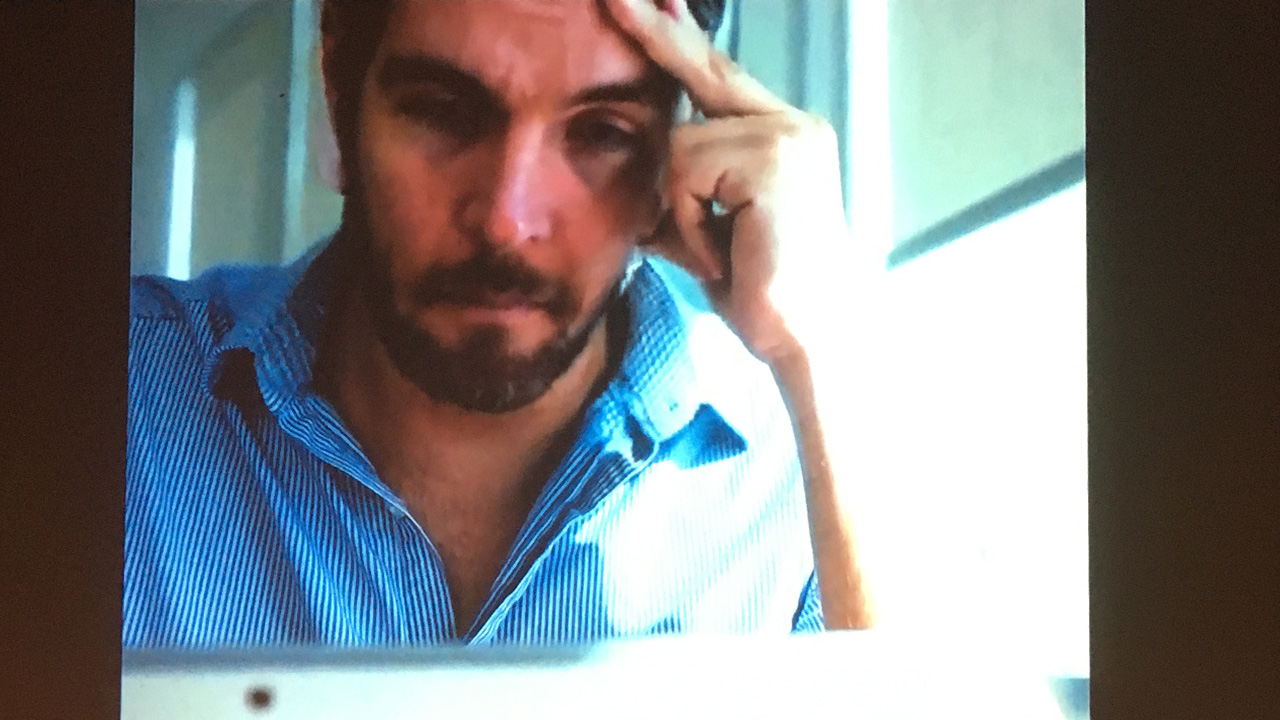
It took no time for the surrealness to kick in. I instantly jolted at the flawless sight of me as an Orson Welles-type star reflecting on an infamous career powered by a “loud acting style” and throwing crap around the room. It was like having an ice-cold bucket of fake Liams splashed across my real Liam face, a testament to Hyper Cinema’s quick and convincing deep-fake abilities and AI-constructed voicework (note: it didn’t sound like me but I also didn’t give the data cube any audio).
The second universe didn’t fare as well unless you consider the sight of me as a big-bosomed angel with a freakishly augmented grin a victory. I don’t, though it fared slightly better than the fourth one, which didn’t feature much of me at all for some reason.
The third story was the clear winner. Called ‘The Rise, Fall, and Resilience of Maguren’, this business biopic depicted me as a financial titan of 1950s Otago. Sure, the clothing and setting didn’t match the era but it nonetheless illustrated a convincing depiction of a more handsome version of myself strutting with the confidence of a Wall Street douchebag. It even came with a brain-vomit quote that felt perfectly in character: “Mind’s voyage holds the key. Move without touch, the treasure you seek lies within reach.”
I then entered the second phase of Hyper Cinema: a multiverse art gallery. You pick a monitor, chuck the cube in, observe a portrait of you in a different life, and read the AI-generated synopsis of the piece. Though not as technically impressive, this section conjured more consistently entertaining results. Below are a handful of examples I reluctantly decided to share.
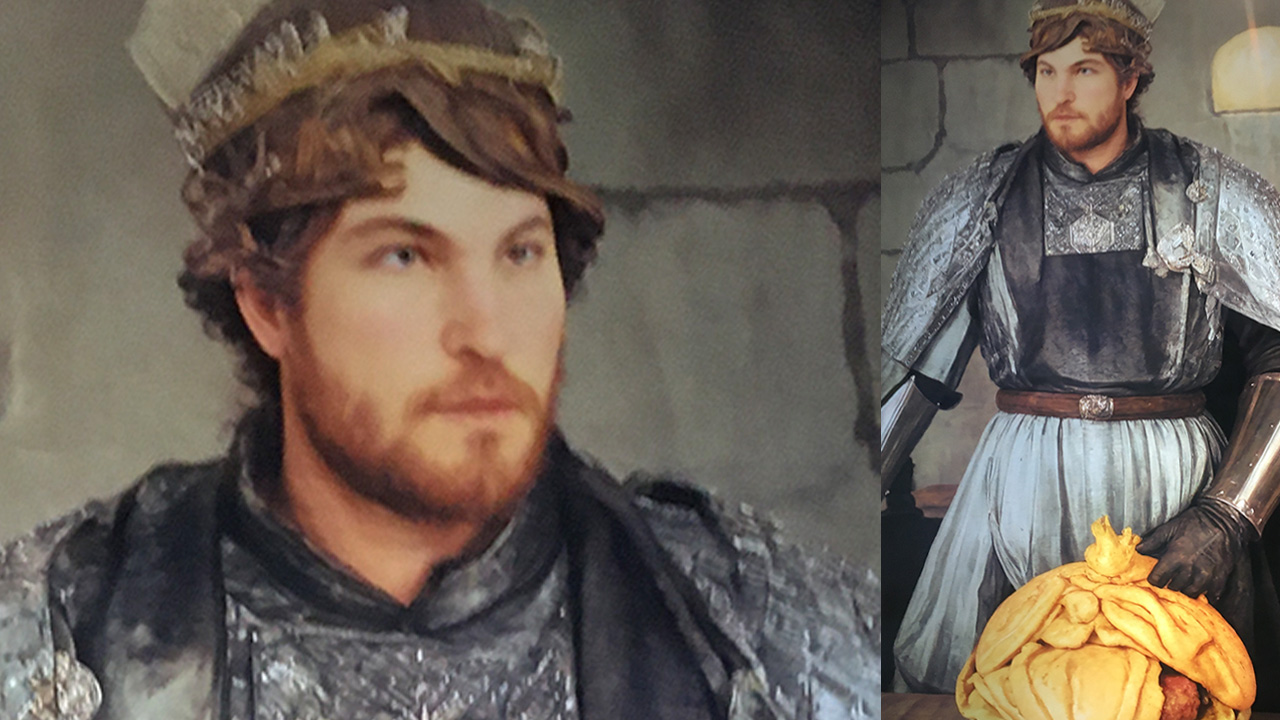
The Bittersweet Epoch of King Liam
Somehow being both incredibly flattering and taking the absolute piss, the AI threw up this beautifully rendered version of me as a crosseyed king of 13th Century Ireland. Apparently, I was a ruler “renowned for his curiosity” who “famously used broccoli, then a novel rarity, to unite feuding clergies.”
To the AI’s credit, it successfully picked up on my Irish lineage from my dad’s side of the family. I’m also Māori from my mum’s side but the AI never twigged to that. Not that I’m judging; that part of me often flies under the radar (re: generic-looking white guy).
Regardless, the sight of this doofus king and the bread-meat-sack-thing he was holding made me laugh involuntarily. It caused a guy behind me to look, laugh, and rightfully roast this other me as “The Burger King.”
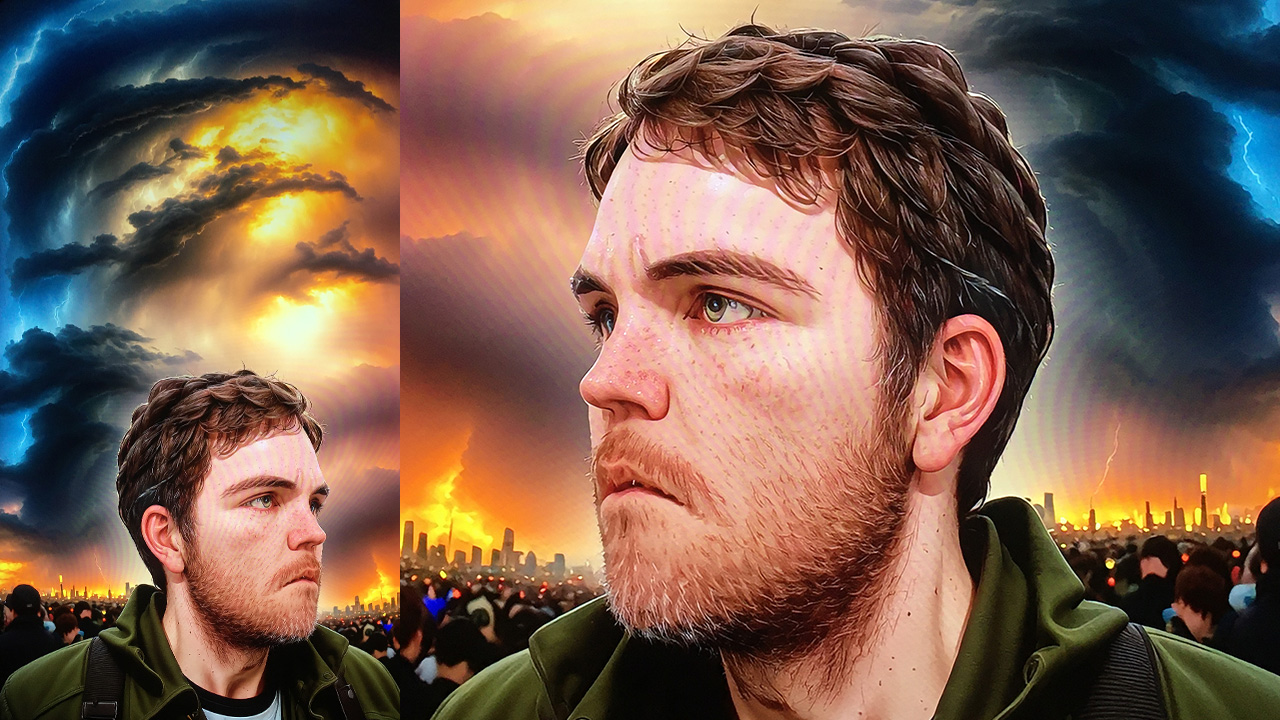
Endurance in Forgotten Melbourne
Here I am, looking incredible for a 46-year-old in dystopian Melbourne. Having a little fun with my very real fear of the very real climate crisis, this AI scenario painted me as a once hopeful chef turned “gritty survivor in a crumbling city. The climate crisis triggered a dystopian 2020. Melbourne turned hostile. In 2025, The Great Famine Year, even his resourceful culinary skills failed him.”
Fun.
Despite the somewhat confronting nature of this piece, I did see a very real part of myself in it. It’s not exactly a compliment, but my blank expression during high-pressure situations has been observed by others, so the image feels fitting. I’m also in a phase of my life where I’m actively trying to reduce the digital noise around me (screentime, social media, online content) for my own peace of mind, which parallels this Liam’s journey in “finding solace in quiet survival.”
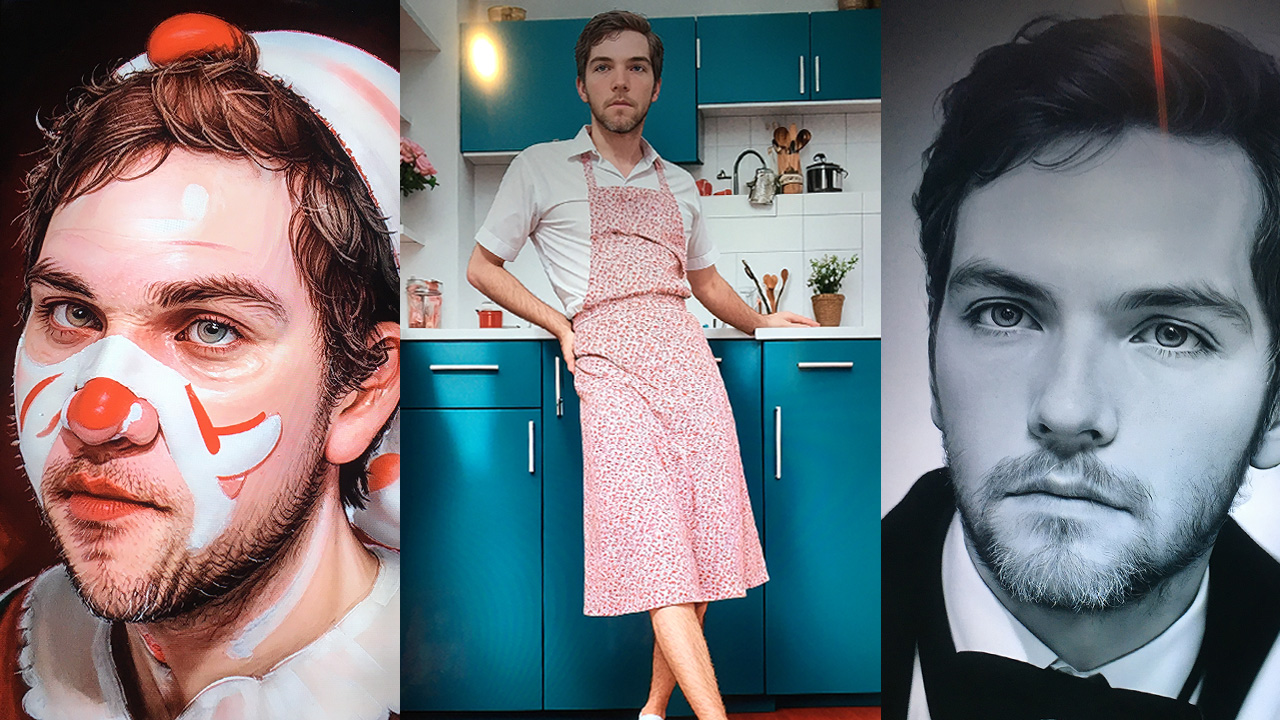
More Liams from past universes
Another Liam from a parallel past had a hell of a stint as an “Unnamed Jester,” responsible for the “Clown Renaissance” of 1977. I don’t think the AI knew about my vague interest in circuses of a bygone era when creating this piece and the rest of the related synopsis didn’t feel generated from any info I gave the cube, but I’m drawn to a particular visual irony of the portrait, where prominent makeup surrounds the very slightest of smiles. This is definitely how I’d look as a clown. Trust me on that one.
Then there’s the image of me as a housemaker, feeling confident in my womanhood and prominent body hair, in a presumably progressive version of the 1950s. At this stage, the AI synopsis generator seemed more like it was playing mad libs, spouting some nonsensical suggestion that this Liam’s “strikingly inventive” use of broccoli “played a key role in the domestic climate crisis.” Fortunately, this woman did write a cute haiku: “Broccoli blossoms. Quietly curious, I bloom. Green, my world turns.”
Finally, there’s another black-n-white movie star Liam. Not gonna lie: this dude’s an absolute dreamboat with his flawless skin and precision-groomed beard. Once again, the AI drills into “his loud acting career” with more gobbledygook about the performer’s telekinetic broccoli-tossing abilities. On the plus side, there’s mention of a film he made about environmental awareness that won an award—something that actually did happen to me.
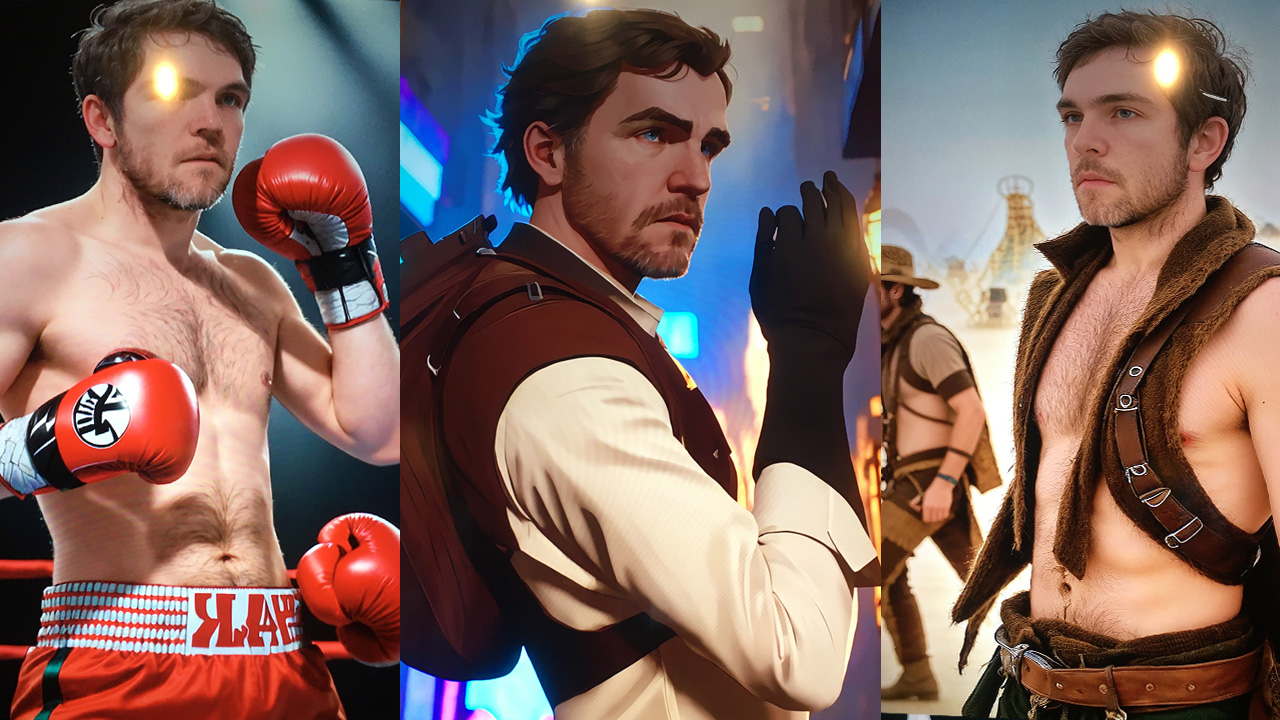
All the other Liams I didn’t need to see
At this stage, I was getting pretty sick of myself. A typical feeling for me, but my cup overfloweth with this lot.
Let’s start with the British heavyweight boxing phenomenon—phenomenal for looking more like a welterweight, I have to assume. The synopsis AI continued to lean way too far into my climate angst and the telekinesis thing. A reference to a broccoli-heavy diet would have made more sense, I would have thought, but the AI didn’t care to mention that. It also never mentioned why I had a boxing glove on my crotch.
The anime cowboy, however, made gloriously ridiculous use of my info. The star of early ’90s comic series ‘Quantum Errant’, this Liam was a beacon of hope during the climate crisis, gifted with telekinetic abilities and a stopwatch that could manipulate time. Yee-fucking-haw. Get that on Netflix.
I still don’t know what to make of the Zardoz-looking Liam, subject of the photoprint ‘Echoes of a Telekinetic Chef Beneath the Nevada Stars’. I’ll just plonk the AI synopsis here and call it a day: “For decades, Liam Maguren, the Telekinetic Chef of Burning Man, has enchanted the festival. Since 1996, at Dog Camp, his supernatural culinary displays, inspired by a childhood dream, have fed attendees. A torchbearer for climate action, Liam’s green practices have reshaped the festival’s carbon footprint, mirroring the man himself—quietly passionate, curious—parallel to the dog—his spirit animal. A legendary presence, his cuisine whispers of tales beneath the Nevada stars.”
As I dumped my cube into the data-erasing bin, the labcoat man gleefully asked about my time with Hyper Cinema. I didn’t have the heart say my mind wasn’t blown or that the AI-generated synopses felt like randomised scramblings of the same strange description. I definitely avoided talking about the part in the movie where the AI placed my face onto a Black man’s body, which might forever be the most uncomfortable three seconds of my life.
Beyond that, I answered truthfully: “I was entertained.” On further reflection, that feeling is more significant than I initially realised.
We’re currently riding upwards on the exponential curve of AI development. This journey into the unknown comes with a lot of fear, and not just the kinds we’ve latched onto through apocalyptic sci-fi movies. A significant motivator behind the current actors and writers’ strike points towards the dubious usage of AI as a means of downgrading—or replacing—these workers. In terms of data collection, it’s the Wild West out there, with a flurry of AI-using outlets getting busted for straight-up plagiarism.
Hyper Cinema stands as a framework for how AI can be used ethically and responsibly in a manner understandable to the layman. Through the protected procedure of simple and consensual data collection (and responsible disposal of said data), it allows people to see for themselves how their data can be used by AI—a valuable process made engaging through entertainment.
And while I already knew a fair bit about AI deep-fakery going into this experience, it was another thing entirely to see myself inside that machine. Sometimes deadly convincing, other times as goofy as a funhouse mirror, Hyper Cinema still succeeded as an enjoyable and, more importantly, accessible experience with AI.
If nothing else, it’s the closest I’ve ever come to being a clown. Or a woman. Or the crosseyed king of Ireland.










